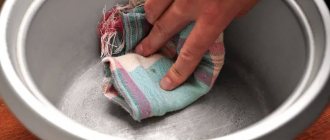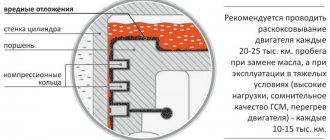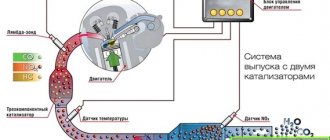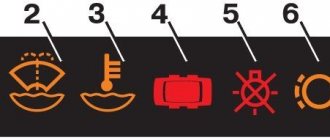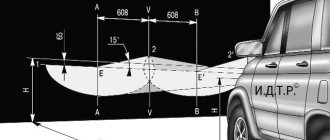First aid for piercing a leg with a nail:
Removing a nail from a foot after a piercing
If the wound is deep and the nail is deep enough or has passed through, the victim should be immediately taken to a medical facility or call an ambulance. Independent actions aimed at removing a foreign body from a wound can aggravate the victim’s condition and lead to more severe consequences. If the wound is not deep, you can try to remove the nail yourself. Usually, it is problematic to remove rusty nails, since they have a non-uniform surface, which makes the extraction process very difficult.
Wound disinfection
For primary disinfection of the puncture site, you can use solutions of Hydrogen Peroxide 3%, Miramistin 0.01%, Chlorhexidine bigluconate 0.05%, Diocidine. After careful treatment, the wound should be carefully bandaged. For additional prevention of infection, the edges of the wound should be treated with a 5% iodine solution or a brilliant green solution. After first aid is provided, the victim should be taken to the nearest medical facility to assess the severity of the injury and further treatment.
Further treatment
If the injury is minor and there are no signs of infection or any complications, treatment at home is acceptable. To do this, it is necessary to regularly (3-5 times a day) treat the wound with antiseptic solutions (see above), use antibacterial wound-healing ointment: Levomekol, Pantestin, Argosulfan, etc.; then apply a sterile bandage.
Do you need antibiotics if you hurt your leg with a nail?
If your leg is severely swollen after being pierced with a nail, it becomes purulent and swollen, the pain intensifies, and you notice an increase in body temperature, in addition to local treatment, the doctor will usually prescribe a systemic antibiotic.
The most common broad-spectrum drugs prescribed for injuries accompanied by skin infection:
- fluoroquinolones (Levofloxacin, Ciprofloxacin and analogues)
- macrolides (Azithromycin, Clarithromycin and analogues)
- lincosamides (Clindamycin and analogues)
You need to take antibiotics for as many days as your doctor prescribes. You cannot shorten the course of treatment on your own, even if you feel better, since you may not complete the infection, which will lead to complications. Resistance to antibiotics may also develop, and the next time they will not help.
Don't forget about gut support while taking antibacterial agents. Two hours before or after taking them, take Enterol capsule 2 times a day. It will help avoid problems with the gastrointestinal tract after antibiotic treatment.
What to do if you step on a nail
Stepped on a nail
is a common injury that causes a puncture wound, often in the shape of a circular hole. Puncture wounds may look small, but because they penetrate deep into the skin, they are difficult to clean and pose a risk of infection.
A puncture wound may not look serious at first because it often bleeds more from the inside than the outside. However, because nails on the ground are often dirty, they may contain soil, rust, wood, or fibers.
Stepped on a rusty nail, tetanus
Tetanus is a dangerous infectious disease caused by anaerobic infection and often causes death. Usually this vaccination is administered every 10 years, but if vaccination was carried out earlier than this time, that is, more than 10 years have passed, then it is urgently necessary to do this vaccination on the day of injury. You should definitely treat the wound with brilliant green or iodine. Depending on the situation, you can do the following.
Stepped on a rusty nail, tetanus:
- If the nail is rusty, the wound is deep, or there are particles of debris or rust left in it, then it is necessary to take antibiotics for 7-10 days, and also treat the wound with antiseptics.
- Chlorhexidine, Miramistin, Furacilin or Decasan solution are suitable. These are local antiseptics that do not cause a burning sensation and do an excellent job against both viruses and bacteria.
- All these drugs work well against pathogenic and opportunistic microorganisms. Antibiotics are usually prescribed to be taken for 5-10 days. At the same time, dressings and regular inspection of the wound are also recommended.
Rehabilitation
First aid
A person should see a doctor within 24 hours after stepping on a nail to minimize the risk of tetanus or other infection. What to do if you step on a nail:
- Wash your hands thoroughly with soap.
- Using a clean cloth, apply gentle pressure to the wound to stop bleeding.
- Wash the wound with clean water and soap for 5-10 minutes.
- If the wound is clogged, disinfect the tweezers with alcohol and use it to remove the dirt.
- Apply antiseptic, antibacterial ointment to the wound area
- Cover the wound with a clean bandage.
- After this, seek medical help
What is the cause of the disturbing symptoms?
Naturally, if you pierced your leg with a nail, it is painful and noticeable, but what caused the limb to swell, what to do to get rid of the swelling. First, it’s worth understanding the root of the disease so as not to worsen the situation.
Complications in the form of swelling can be caused by:
- External infection. Without exception, any nail contains millions of microorganisms, and not all of them are safe for us. Starting to fight bacteria, the damaged area becomes inflamed, becomes warmer and more painful;
- Such an injury has a lot of unpleasant moments. The shape of the wound (small in cross-section and quite deep) interferes with the normal outflow of blood. Not only does this provoke the development of swelling, but in severe cases, tissue necrosis and the formation of pus may begin;
- If your leg swells after being pierced with a nail, this may be a sign of deep vascular damage. In such episodes, prompt medical attention is needed. Otherwise, partial or complete paralysis of the foot is possible. Often tendons are damaged, resulting in permanent loss of motor function of several fingers;
- Even physiology itself interferes with normal blood flow. The skin on the foot is dense, which is why the external opening quickly closes.
If you have any doubts about what to do if you step on a nail and your foot becomes swollen, consult a doctor immediately. There are often episodes when people stop at self-medication, and then try to correct all the consequences of such a decision.
When to Seek Medical Help
Stepping on a nail can introduce dirt and bacteria into the wound. Even if a person cleans the wound thoroughly at home, there is still a risk of infection.
Clinicians estimate that 10% of people who step on a nail develop an infection. Signs of infection include:
- soreness
- inflammation
- swelling
- accumulation of pus
- fever
- redness
A person should not wait until these symptoms appear to seek medical help. The best way to prevent infection is early treatment.
The causative agent of terrible consequences
Any wound received in “field” conditions is fraught with possible infection with tetanus. Puncture of a leg with a rusty nail is no exception. Few people know about the essence of this disease.
Everything is somewhat simpler, but more dangerous than is usually believed. The causative agent of tetanus is a rod bacterium that lives almost everywhere. We even have it in our intestines. There is a lot of it in soil flavored with humus and feces. That is, in the forest, in the field, just on the street.
READ ALSO: Difference in vision between eyes. What is the reason?
The danger comes from the active life of the spores of this bacterium. They appear under the influence of oxygen and multiply rapidly. This releases a very poisonous toxin, which, in fact, causes dire consequences of infection.
The best way to protect yourself from such a scourge is to get vaccinated against tetanus on time . If you do not have vaccinations, and this is often the case, it is better to seek medical help.
Your healthcare professional will determine how much toxoid or tetanus serum you should give. The doctor may prescribe you a course of antibiotics to prevent the pathogenic activity of bacteria in the body.
You need to understand well that your well-being and recovery directly depend on the moment you consult a doctor. Treatment for tetanus will begin only after you have brought it to the attention of doctors. At home, it is impossible to resist the progression of the consequences of infection.
Pus in the wound. When do you need to take urgent action?
The beginning of the development of a purulent process is indicated by:
- severe pain, both when touching the site of injury at the beginning of the process, and later - constant or periodic jerking, which bothers you even in the absence of contact with an external irritant;
- feeling of heat in the wound;
- change in skin tone to blue, purple or brown;
- a yellow or white spot in the center of the wound.
Subsequently, if competent measures of assistance are not taken, the following signs are added to the existing symptoms:
- lethargy, apathy, loss of strength (due to general intoxication of the body);
- increased body temperature, sometimes significant (39-40 degrees);
- Strong headache;
- chills;
- insomnia due to pain and deterioration of general condition.
Primary treatment of wounds
Immediately after detecting a wound, abrasion, minor burns or cuts, it is important to carry out their initial treatment. This is due to the fact that the objects used to inflict wounds are usually non-sterile, and when the skin is damaged, microbes enter the tissue, which can cause purulent inflammation and worsen the course of the recovery period.
Usually the wounds are washed under running water, you can use laundry soap. It is also important to treat the wound with a 3% hydrogen peroxide solution to remove the remains of destroyed cells, stop the bleeding and kill bacteria that have entered the wound. The skin around the affected area should be treated with alcohol antiseptics (5% iodine or brilliant green alcohol solution).
Important! These products cannot be poured into the wound, as many do. Firstly, it hurts, alcohol irritates the nerve endings. Secondly, alcohol has an irritating, cauterizing effect, which will impair healing. Only the skin around the wound is treated.
Means for healing wounds and burns: first stage
Any wounds that occur on the skin have two stages of healing. The first is the inflammatory stage, when the wound swells, turns red, and ichor and even pus can accumulate in it. At this stage, the use of antiseptic and anti-inflammatory drugs is necessary. If the wound is prone to suppuration, local antibiotics or antiseptics may be required.
Also, drugs are selected based on the degree of damage and the depth of the wounds - shallow cuts, scratches, abrasions or burns, abscesses, trophic ulcers.
Advantages of drugs that heal wounds at the first stage:
- they help relieve inflammation and have a disinfecting effect;
- They are easy to apply and can be used without a prescription.
- acceptable for use without a doctor's prescription.
Disadvantages of these funds:
- there are contraindications and a number of side effects;
- it is possible to develop allergies or intolerance to components;
- Not suitable for all age groups.
To avoid any side effects, you must use any product strictly according to the instructions.
The drug is available in the form of an ointment and is used externally. Sold without a doctor's prescription. The active components of the drug are dioxomethyltetrahydropyrimidine with chloramphenicol. It has an antibacterial effect, helps in stimulating local immune defense, tissue regeneration, and suppressing the inflammatory process associated with bacterial infection. The ointment is applied in a thin layer to a previously cleaned wound and covered with a bandage. Repeat up to 3-4 times a day until the wound begins to heal.
Can be used to treat both small wounds and scratches, as well as purulent, weeping wounds, thermal burns, and trophic ulcers. Helps in the healing of post-operative wounds. It is important to remember that the drug contains an antibiotic, has a number of contraindications, is used only on previously cleaned surfaces, intolerance to the components is possible.

